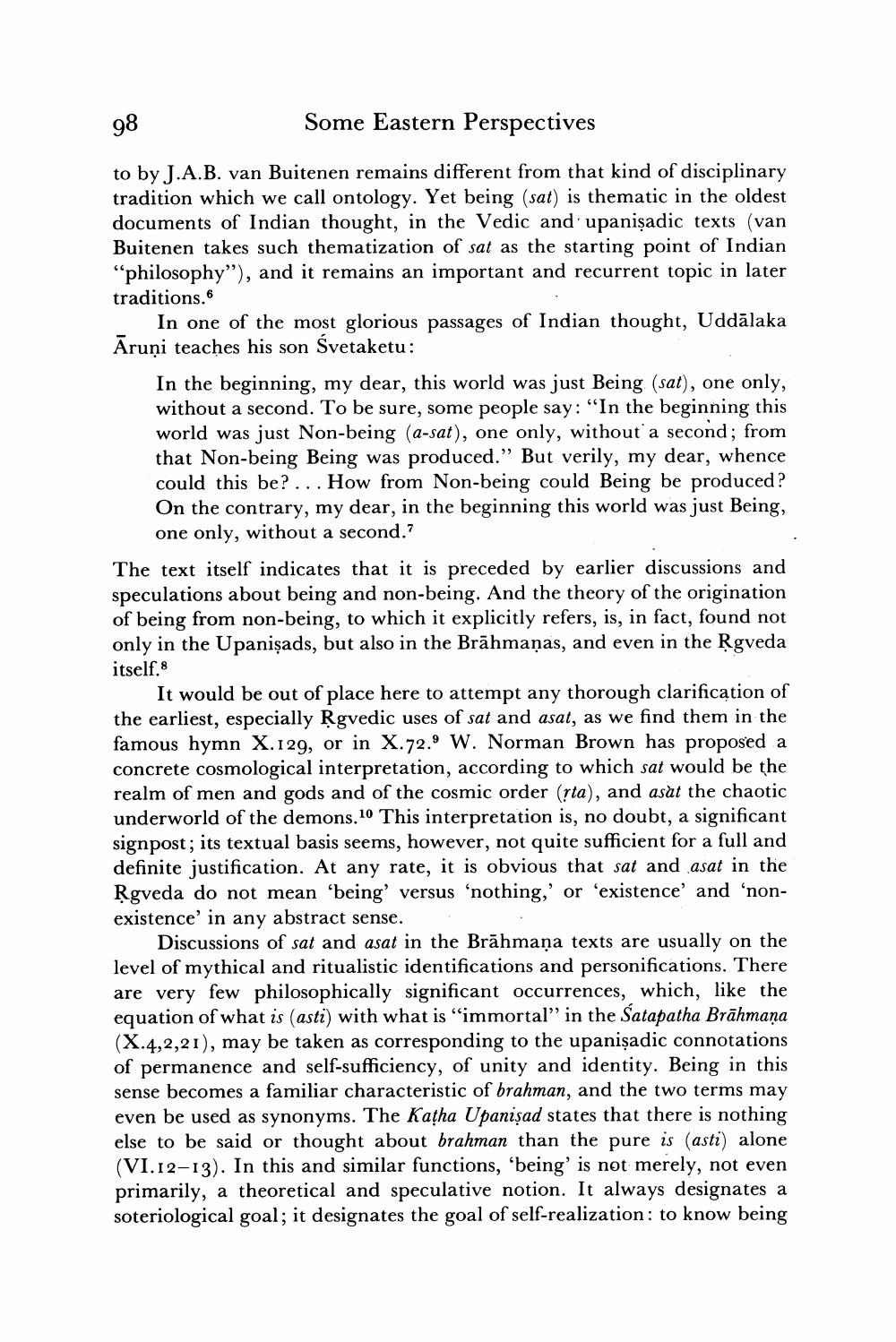________________
98
Some Eastern Perspectives
to by J.A.B. van Buitenen remains different from that kind of disciplinary tradition which we call ontology. Yet being (sat) is thematic in the oldest documents of Indian thought, in the Vedic and upaniṣadic texts (van Buitenen takes such thematization of sat as the starting point of Indian "philosophy"), and it remains an important and recurrent topic in later traditions.6
In one of the most glorious passages of Indian thought, Uddālaka Āruni teaches his son Svetaketu:
In the beginning, my dear, this world was just Being (sat), one only, without a second. To be sure, some people say: "In the beginning this world was just Non-being (a-sat), one only, without a second; from that Non-being Being was produced." But verily, my dear, whence could this be?... How from Non-being could Being be produced? On the contrary, my dear, in the beginning this world was just Being, one only, without a second."
The text itself indicates that it is preceded by earlier discussions and speculations about being and non-being. And the theory of the origination of being from non-being, to which it explicitly refers, is, in fact, found not only in the Upanisads, but also in the Brāhmaṇas, and even in the Rgveda itself.8
It would be out of place here to attempt any thorough clarification of the earliest, especially Ṛgvedic uses of sat and asat, as we find them in the famous hymn X.129, or in X.72.9 W. Norman Brown has proposed a concrete cosmological interpretation, according to which sat would be the realm of men and gods and of the cosmic order (rta), and asat the chaotic underworld of the demons. 10 This interpretation is, no doubt, a significant signpost; its textual basis seems, however, not quite sufficient for a full and definite justification. At any rate, it is obvious that sat and asat in the Rgveda do not mean 'being' versus 'nothing,' or 'existence' and 'nonexistence' in any abstract sense.
Discussions of sat and asat in the Brāhmaṇa texts are usually on the level of mythical and ritualistic identifications and personifications. There are very few philosophically significant occurrences, which, like the equation of what is (asti) with what is "immortal" in the Satapatha Brāhmaṇa (X.4,2,21), may be taken as corresponding to the upaniṣadic connotations of permanence and self-sufficiency, of unity and identity. Being in this sense becomes a familiar characteristic of brahman, and the two terms may even be used as synonyms. The Katha Upanisad states that there is nothing else to be said or thought about brahman than the pure is (asti) alone (VI.12-13). In this and similar functions, 'being' is not merely, not even primarily, a theoretical and speculative notion. It always designates a soteriological goal; it designates the goal of self-realization: to know being




